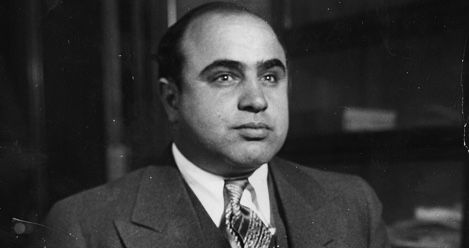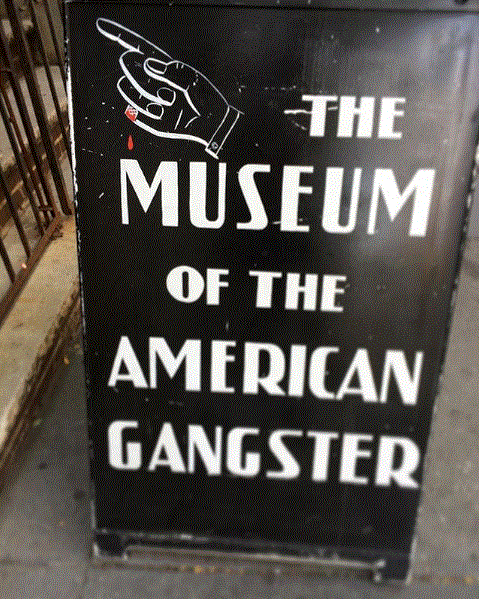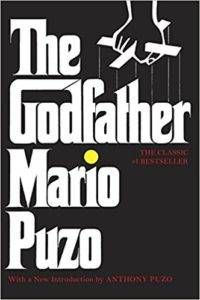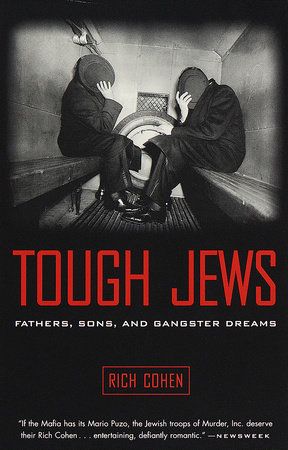
14 Books about Gangsters for the St. Valentine’s Day Massacre
I always joke that I missed my calling as a mafiosa; since I can remember, I have been obsessed with the gangsters of the 1920s through ’40s. I was so pumped to find out in my 20s that my great-great-uncle (Nonamous McBrayer—yes, that was his real-ass name) was a bootlegger in North Carolina. He is legit smiling in his mug shot, y’all. When we checked into our hotel in Havana, I pointed out to my boyfriend they were playing The Godfather‘s theme song. I’m a little obsessed.
Anyway, the first time I went to New York City (I’m from the South), the thing I most wanted to see was the independent Museum of the American Gangster—and it REALLY delivered. I introduce this place because I need y’all to know that the docent at that museum taught me SO much about the culture of the mob, and I want to be sure to give credit where credit is due. For example, Al Capone’s famous St. Valentine’s Day Massacre of 1929—which is, lbh, the real reason to remember February 14—FAILED. Kind of. Why? The target (Bugs Moran) wasn’t at the garage where he was supposed to be: he was getting a shave and a haircut for a hot date that night. (Granted, this massacre did establish Scarface as the boss of Chicago without him ever getting called to trial, so it wasn’t a total bust.)
My favorite period of gangsters started—of course—as a product of Prohibition. In New York and Chicago, from what I understand, it was illegal to SELL alcohol, but it wasn’t illegal to DRINK alcohol. So, gangsters saw a hole in the economy: there was a demand and no supply. This started the speakeasy concept. If you bought a “membership” it was all-you-could-drink. (Last pitch for the museum, probably-maybe: it’s IN a former speakeasy! I literally walked past it twice.)
What I think so often gets romanticized about gangsters is their ability to bootstrap themselves into success despite open prejudice against them. Although we would consider many of the ethnicities of gangsters “white” by today’s standards, their contemporaries would not have done so. So, while you’re reading this selection, keep in mind that during the 1920s–’40s gangs functioned in part as both a form of either vigilante justice (and God knows I’m a sucker for a vigilante beatdown), or an economy boost for those who otherwise could not even enter the economy.
 1. The Godfather by Mario Puzo
1. The Godfather by Mario Puzo
You undoubtedly know of these two best-movies-of-all-time and the third that we have chosen as a culture to forget, but have you read the book The Godfather by Mario Puzo? Better yet, give it a listen—all the characters are portrayed by different actors, and it’s a lot like watching the extended cut of the film in your brain.
Although this choice probably seems somewhat obvious, the reason why it’s so famous embodies, I think, some significant reasons why our culture is so obsessed with gangsters as a whole. We see traditions of the old world in the new world that requires immigrants to assimilate and stay at the bottom of the economy if they want to be in America, and yet the Corleones do just the opposite. They make their own economy, and they earn trust by providing protection…from America’s law enforcement itself. And these are not old issues. We see them happening on a daily basis, even modern-day.
2. Honor Thy Father by Gay Talese
Honor Thy Father by Gay Talese is arguably about the literal family on whom the Corleones were based, the Bonannos. This book is nonfiction, and its author is one who interviewed the famous mafioso, Joseph Bonanno. What I loved about this book was that Talese does not write himself out of the story, the way many journalists and nonfiction writers choose to do. Rather, he acknowledges that his presence changes the story somewhat.
Another of my favorite scenes from this book happens when Joseph Bonanno watches Francis Ford Coppola’s film, The Godfather, and he admits something like, “Yeah, that’s pretty accurate.”
3. The Great Gatsby by F. Scott Fitzgerald
Another classic of the 1920s, most people forget that the titular character of The Great Gatsby by F. Scott Fitzgerald is, in fact, a bootlegger. That’s how he made his millions! That’s how he rose to the economic status that Daisy needed in order to justify being with him!
Plus, you have the scene at the party with Meier Wolfsheim in which Gatsby tells Nick, “That’s the man that fixed the 1919 World Series.” Which brings me to my next point…
 4. Tough Jews by Rich Cohen
4. Tough Jews by Rich Cohen
Most of the gangsters we see in films are Italian, usually Sicilian, and occasionally they’re Irish. The first gangsters, however, were often Jewish. Many fled Europe and the horrors of Adolf Hitler to immigrate to America. Tough Jews by Rich Cohen documents the facts of the Jewish gangsters of the era.
5. Jewish Gangsters of Modern Literature by Rachel Rubin
Similarly to the two books above, Tough Jews by Rachel Rubin discusses fictional representation of Jewish gangsters throughout modern literature, “specifically on the Russian writer Isaac Babel and Americans Mike Gold, Samuel Ornitz, and Daniel Fuchs, but also taking in cartoons, movies, and modernist paintings.” (Description from Amazon.)
6. WiseGuy by Nicholas Pileggi
If you liked the movie Goodfellas by Martin Scorsese, you’ll like this book, which he used as a reference. Wiseguy by Nicholas Pileggi is a book of journalistic nonfiction about the working class Brooklyn kid, Henry Hill, who was eventually responsible in part for the Lufthansa heist. (Fun fact: Henry Hill is one of the only known people to be kicked out of the Witness Protection Program; from what I understand, he really liked to brag about that heist.)
7. Gangs of New York by Herbert Asbury
Another book adapted by Scorsese (which includes nearly every man I’ve ever loved in its cast), Gangs of New York: An Informal History of the Underworld by Herbert Asbury details the turn of the century. This book is another work of journalistic nonfiction which details the Bowery and Five Points and its numerous gangs of the time—including but not limited to Hell Cat Maggie, who traded human ears (her trophies) for drinks.
8. Pimp: The Story of My Life by Iceberg Slim
Part of what makes the gangsters of the 1920s different from what the gangsters we know today is that their trade, in modern perspective, is mostly innocuous. They were hustling a substance that is now legal, alcohol. However, I’d be stupid not to at least mention that modern gangsters don’t hustle alcohol, they hustle drugs, or in the case of Pimp: The Story of My Life by Iceberg Slim, he hustled sex. As you may have noticed from the title, this is a memoir that details the psychology and capitalism of a pimp from his own perspective, of Chicago during the 1940s, ’50s, and ’60s. It is truly chilling.
9. Molly’s Game by Molly Bloom
You’ve likely seen the motion picture starring Jessica Chastain and Idris Elba, but Molly’s Game by Molly Bloom, the book, is what made that possible. The book details Molly Bloom’s rise to “Hollywood’s poker princess,” and her fearless hosting of exclusive high-stakes private poker games, first of celebrity royalty and eventually of the Russian and Italian mobs. This book also details her gradual slide into the illegal aspects of running the game.
10. Hell’s Angels by Hunter S. Thompson
Though this book falls out of the category of gangsters from the 1920s–’40s, I’d be remiss not to mention Hell’s Angels by Hunter S. Thompson. In this book of gonzo journalism, Thomson—somewhat like Talese—involves himself in the plot itself. The motorcycle gang of the 1960s and ’70s is a different sort of gang than those that we have seen so far, but nonetheless, they live by a strict moral code outside of the law. One of my favorite quotes from this whole book is from Sonny Barger, the leader of the Hells Angels: “You treat me good, I treat you better. You treat me bad, I treat you worse.”
11. No Country for Old Men by Cormac McCarthy
This one may also come from off the radar, but No Country for Old Men by Cormac McCarthy is the story of how gangs evolved in the American West during the 1980s. Our main antagonist, Anton Chigurh, is a lone wolf, but there are so many people on so many sides of the same fight that it’s hard not to see how gangsters are involved in this one! (It’s also, IMHO, one of the best novels about gangsters ever written.)
 12. Word is Bone by Christopher David Rosales
12. Word is Bone by Christopher David Rosales
Though not, at first glance, directly about gangs or gangsters per se, the novel Word is Bone by Christopher David Rosales (who is my actual friend, omg) portrays the neighborhood of Clearwater, California. Here, everyone is involved in crime out of necessity—which is the main reason, I think, the gangster of the 1920s is so romanticized. We don’t love them for being criminals: we love them for their triumph over laws that were clearly written to keep them from triumph. This novel undertakes many of those instances, whether it comes from a loyal daughter sabotaging her mother’s competing sex worker upstairs, the welterweight pimp who defends his neighborhood, or the elderly woman who slanders a potential gangbanger because she thinks he’s trying to seduce a young girl. If you like gangsters and what they stand for, you’ll love this novel.
13. Pablo Escobar: My Father by Juan Pablo Escobar
I always find nonfictional accounts of gangsters fascinating—but even more so when they’re not written by the gangsters themselves. I like to hear the stories from people who knew them. After all, what gangster will ever give you a straight story? Answer: no one. It’s part of the whole deal. But when someone close to them gives the story, well, they may only have some of the facts, but they are more likely facts. Pablo Escobar: My Father by Juan Pablo Escobar, is clearly written by the kingpin’s son. The writeup on Amazon.com says: “This is not the story of a child seeking redemption for his father, but a shocking look at the consequences of violence and the overwhelming need for peace and forgiveness.”
14. Original Gangster: The Real Life Story of One of America’s Most Notorious Drug Lords by Frank Lucas and Aliya S. King
Hot damn. Among the film adaptations of these movies, none cast so many actors with whom I’ve been in love as American Gangster. But the original account, the book Original Gangster by Frank Lucas, touches basically every gangster you’ve ever heard of. Protege to Bumpy Johnson, Frank Lucas is responsible for nosing in on the Italian families who ran the drug game in New York in the 1960s. He cut out the middle men by smuggling heroin from Asia through the U.S. military. This book details his life, and is not to be missed.
That’s my list of dope gangster books for you to celebrate Valentines’ Day with, but I’m always looking for more—particularly about women. Do you have some to add to my list? Or were they too slick to reveal themselves? Anything about Stephanie St. Clair? Let me know what I need to add to my list by writing in the comments!
And happy Valentine’s Day.














